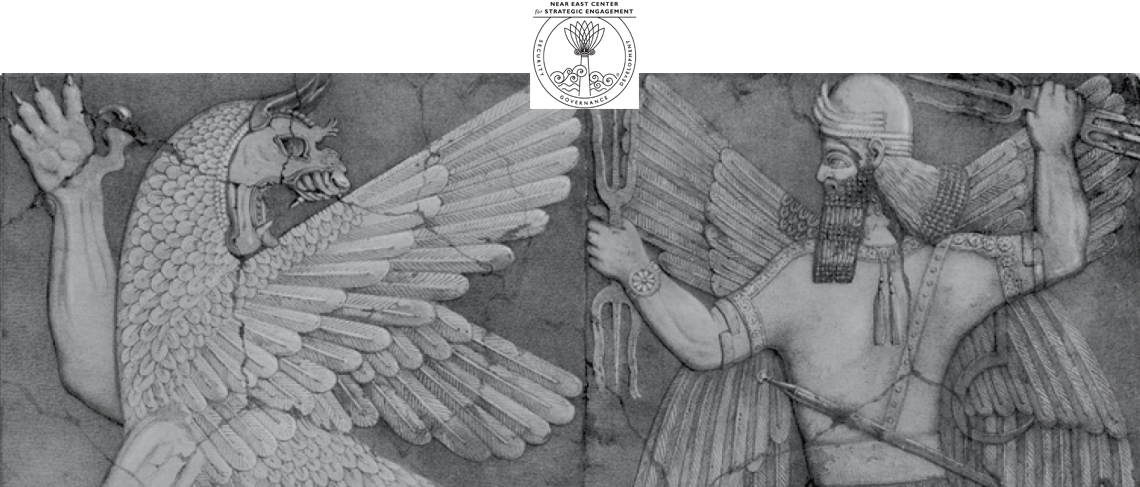On 16 OC 15, NEC-SE posted: The New Model of Power Relations and the Middle East Crisis
In the article we stated: Most Americans are ignorant of the shifting alliances and power blocs that are influencing the course of events in the Middle East. As a result, recent moves by Russia and China in Syria and the Mediterranean Sea have come as a shock to many observers. But those that have followed China and Russia since the mid 1990s, when the Shanghai Cooperative Organization (SCO) was formed as an alternative to the unipolar world led by United States (and, also, as a response to an increasingly assertive and capable NATO) know that the SCO axis had a prior record of conducting multiple national-level joint military and security exercises well before the crisis in Syria placed them in an operational role. [1 & 2]
They also know that the U.S. has played a leadership role in facilitating the recent re-emergence of Russia as a global power and in the rise of China as a military power. Larger American firms tied to the current administration have also been given economic incentives to help sustain China’s faltering economy thereby ensuring that China realizes its vision for the Middle East. [3, 4, & 5]
Thus, in a few years under the current administration, the U.S. has surrendered initiative and leadership on foreign policy to the SCO axis. China is now ahead of U.S. in terms of providing a conceptual vision of the future in not only Asia but throughout world.
This became glaringly apparent last week when Americans watched with astonishment and no little dismay as the Russians and Chinese, in collusion with Iran, undertook to support the Assad regime in the civil war in Syria. Bear in mind that this is the same regime that the Obama administration identified as having crossed a “red line” by using weapons of mass destruction against opposition forces. [8]
NEC-SE hopes that people who value democratic governance will recognize that the new world order as envisioned by the SCO axis is fundamentally hostile to the formation and existence of free societies. Nor is a world organized along the SCO’s authoritarian, statist lines conducive to achieving peace and prosperity among the historical nations of the Middle East.
http://nec-se.webbar312.net/2015/10/16/the-new-model-of-power-relations-and-the-middle-east-crisis/
On 16 MAY 16, NEC-SE posted: Sykes-Picot at 100: New Players, Same Old Game
In the article we stated: 16 MAY 16 marks the 100th anniversary of the signing of the Sykes-Picot agreement. This treaty between Britain, France, and Tsarist Russia provided for the partitioning of the Ottoman Empire’s Middle Eastern territories and associated resources in the event of an Allied victory in World War I. The Allies achieved that victory and as result the provisions of the Sykes-Picot Treaty were implemented, thus shaping the Middle East into the political configurations that would remain substantially unchanged for nearly a century.
These configurations began to change in 2014 with the rise of ISIS. The conquest by ISIS forces of large areas of the Middle East is redrawing the map of that region with much violence and bloodshed. Currently, and in anticipation of the eventual defeat of ISIS, the United States, Russia, the nations of Europe, and various regional players and groups are jockeying for positions of influence in the new high-stakes game of geopolitical restructuring that the present conflict has set in motion. These efforts call to mind the machinations and intrigues that gave birth to the Sykes-Picot Agreement and are likely to prove equally disastrous to the region’s minorities … unless those minorities, working with the understanding that the Western powers will not save them, somehow find the means to defend themselves and create their own maps of the Middle East.
http://nec-se.webbar312.net/2016/05/16/sykes-picot-at-100-new-players-same-old-game/
Related Articles and Video:
https://youtu.be/S8QN1NBgDSk
Categories: Governance, Security


1 reply »